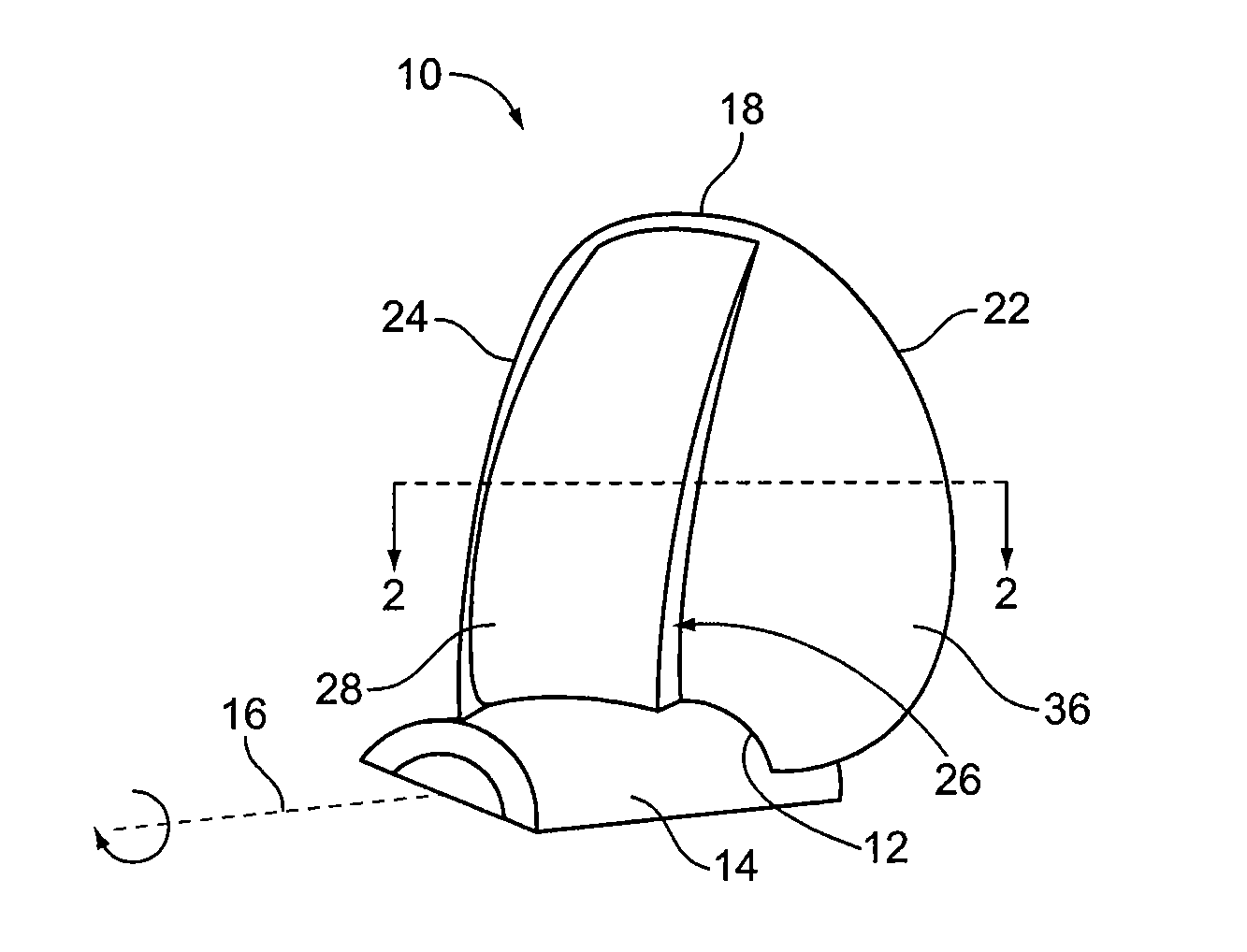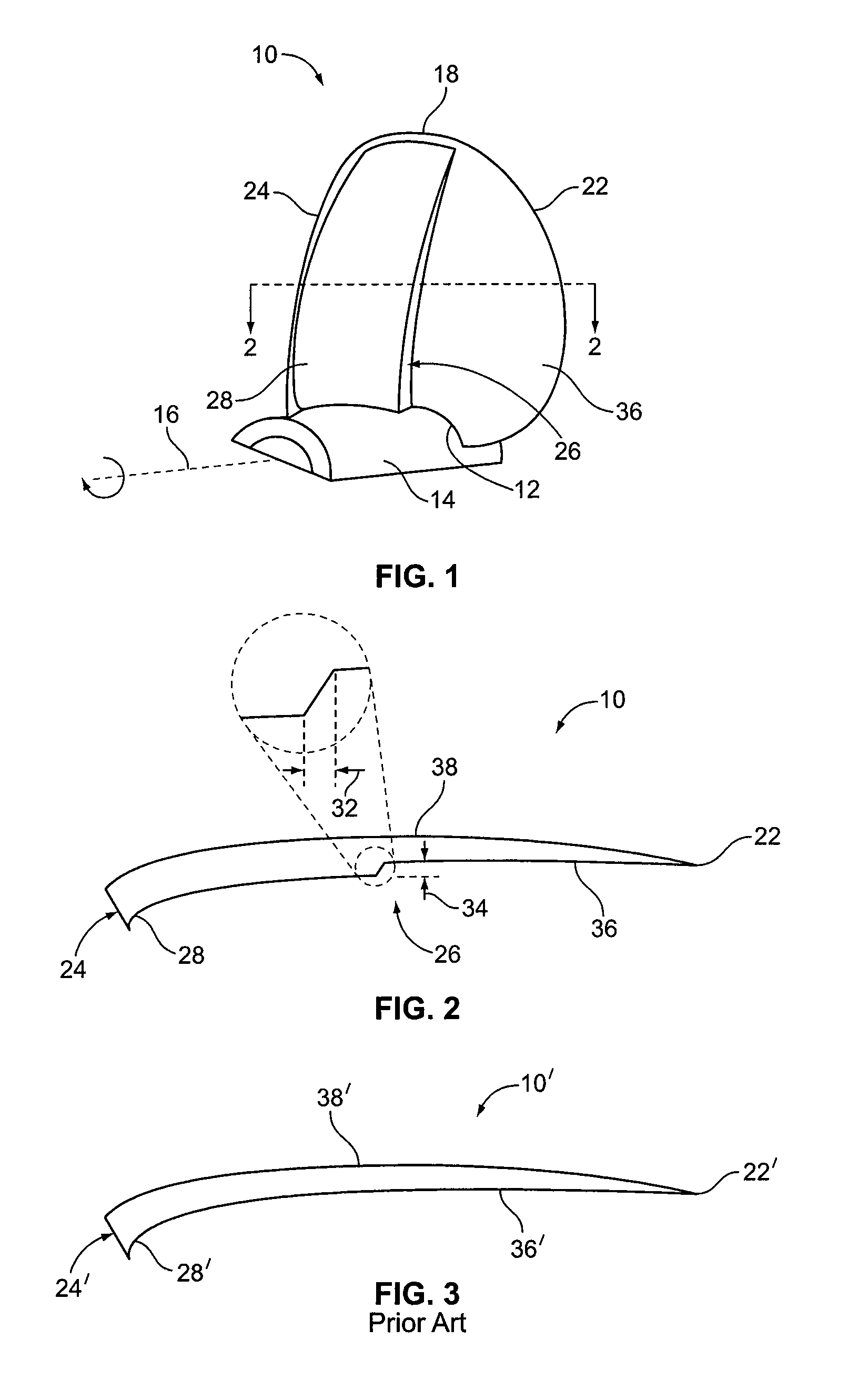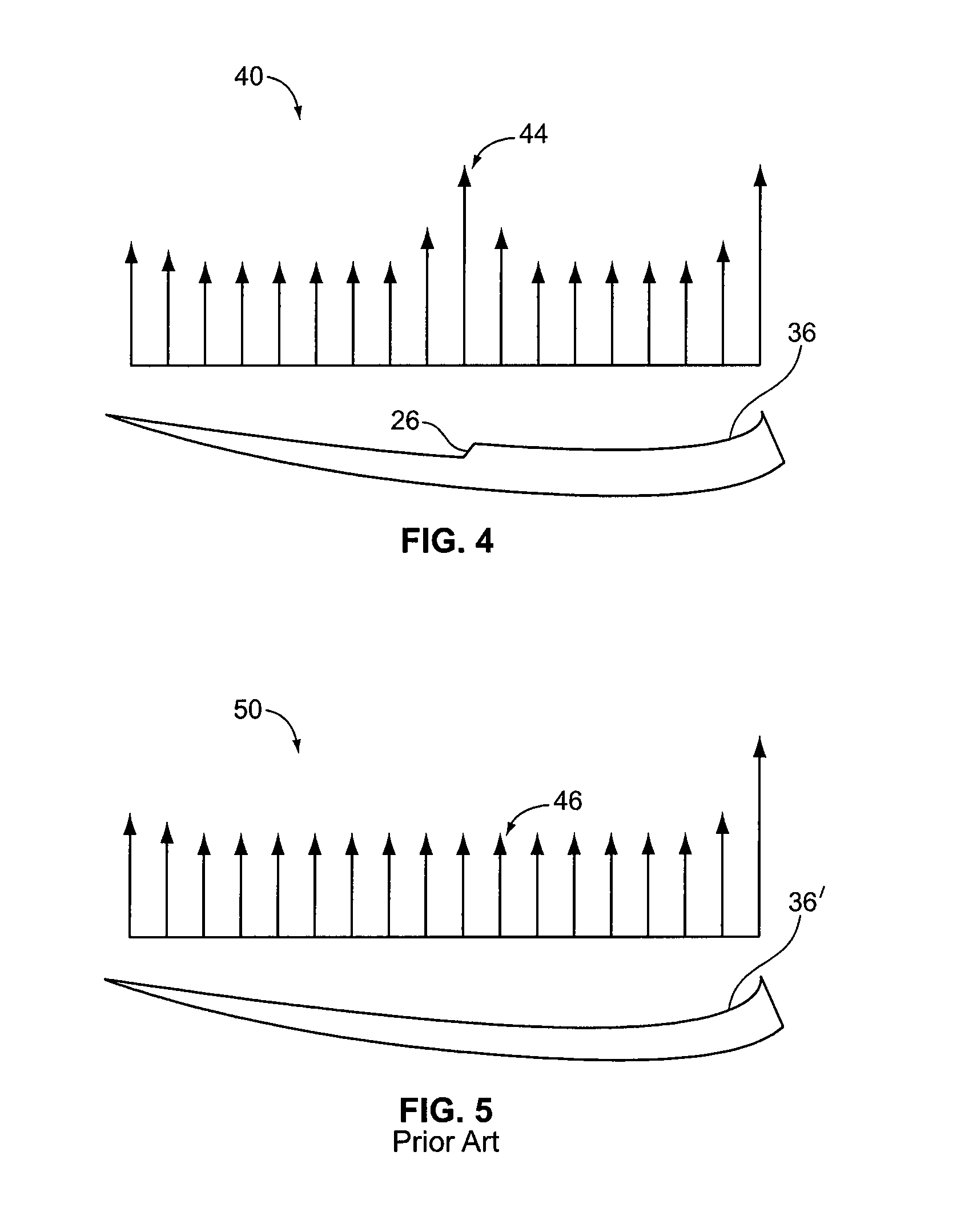Stepped Surface Propeller
- Summary
- Abstract
- Description
- Claims
- Application Information
AI Technical Summary
Benefits of technology
Problems solved by technology
Method used
Image
Examples
Embodiment Construction
[0048]With reference now to the drawings, and particularly to FIG. 1, there is shown a first embodiment of the surface propeller blade 10 of the preferred embodiments. The blade 10 has a blade root 12 securably attached to a propeller hub 14 which rotates about a propeller axis 16. Given that the thrust on a surface propeller is generated by the blade face 36 accelerating the mass of water it is confronting (Newton's second law) then the water exerts an equal but opposite force forward on the blade face (Newton's third law). The force produced by the deflected volume of water is the thrust (or lift), which moves the marine vehicle in the forward direction as shown in FIG. 1. Although only one propeller blade 10 is depicted, a propeller formed of such blades will normally have a plurality of blades, for example, three or more.
[0049]With further reference to FIG. 1, the surface propeller blade 10, has a root 12 and a tip 18 distal from the blade root 12. The blade 10 comprises a leadi...
PUM
 Login to View More
Login to View More Abstract
Description
Claims
Application Information
 Login to View More
Login to View More - R&D
- Intellectual Property
- Life Sciences
- Materials
- Tech Scout
- Unparalleled Data Quality
- Higher Quality Content
- 60% Fewer Hallucinations
Browse by: Latest US Patents, China's latest patents, Technical Efficacy Thesaurus, Application Domain, Technology Topic, Popular Technical Reports.
© 2025 PatSnap. All rights reserved.Legal|Privacy policy|Modern Slavery Act Transparency Statement|Sitemap|About US| Contact US: help@patsnap.com



